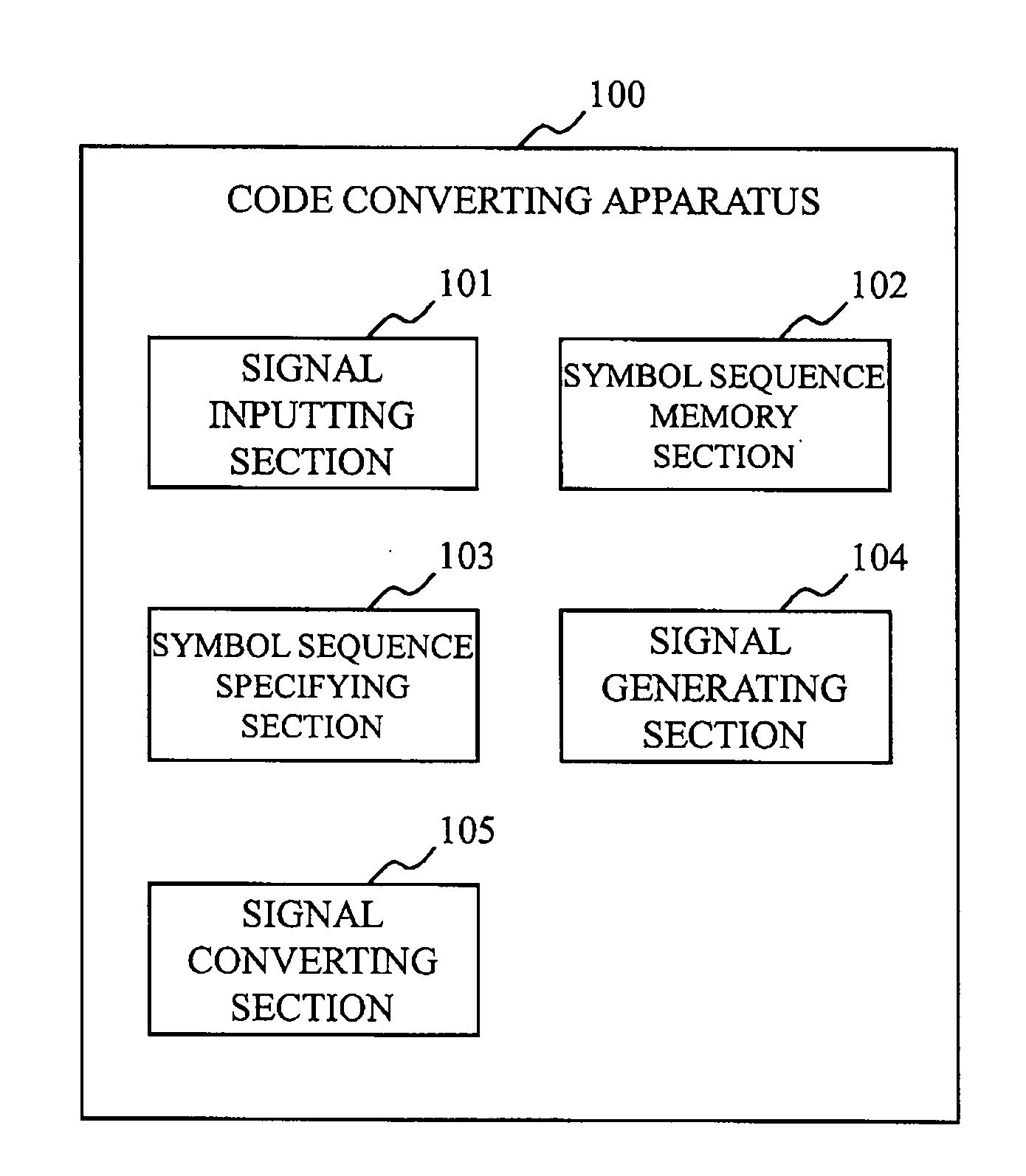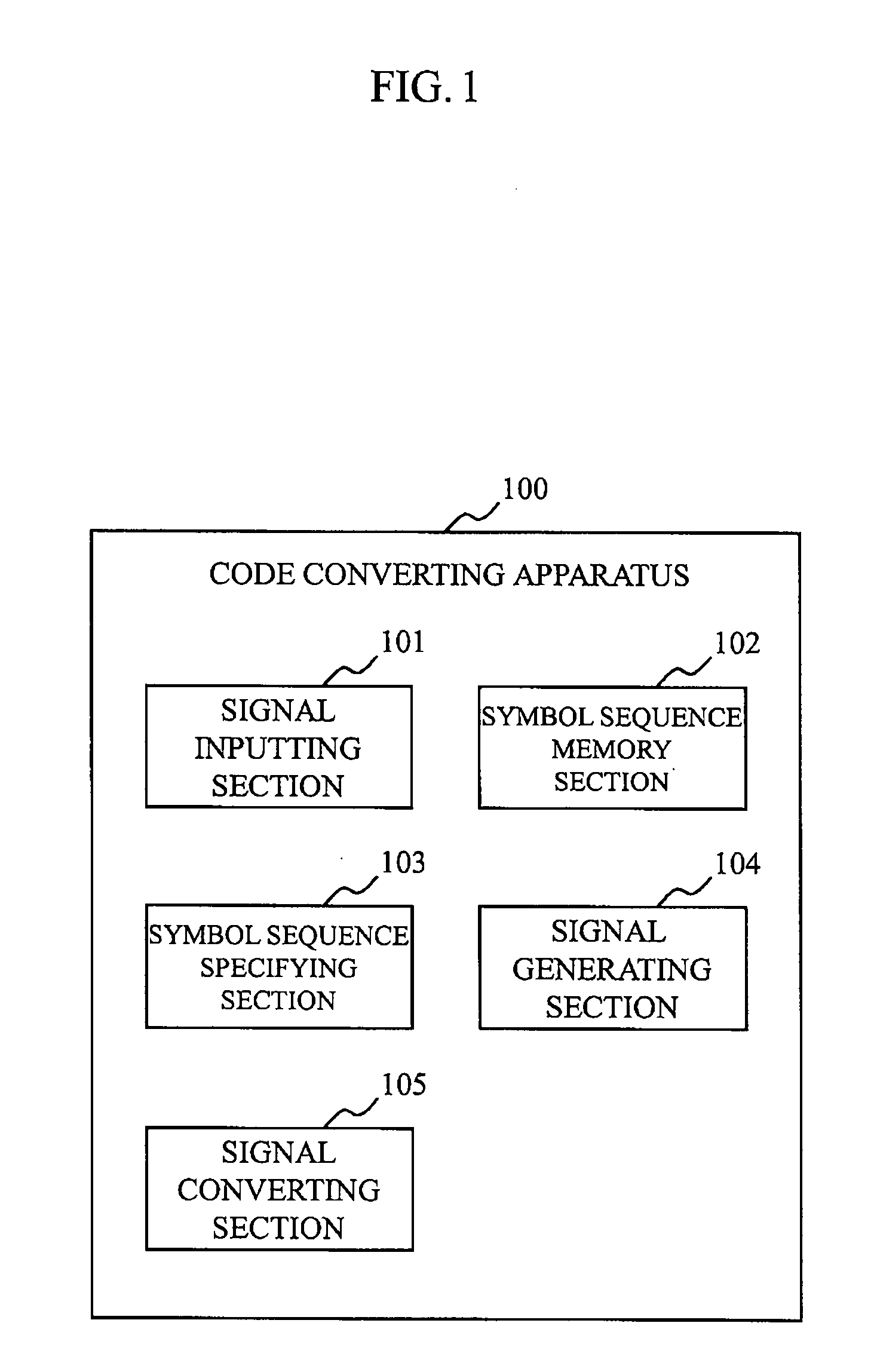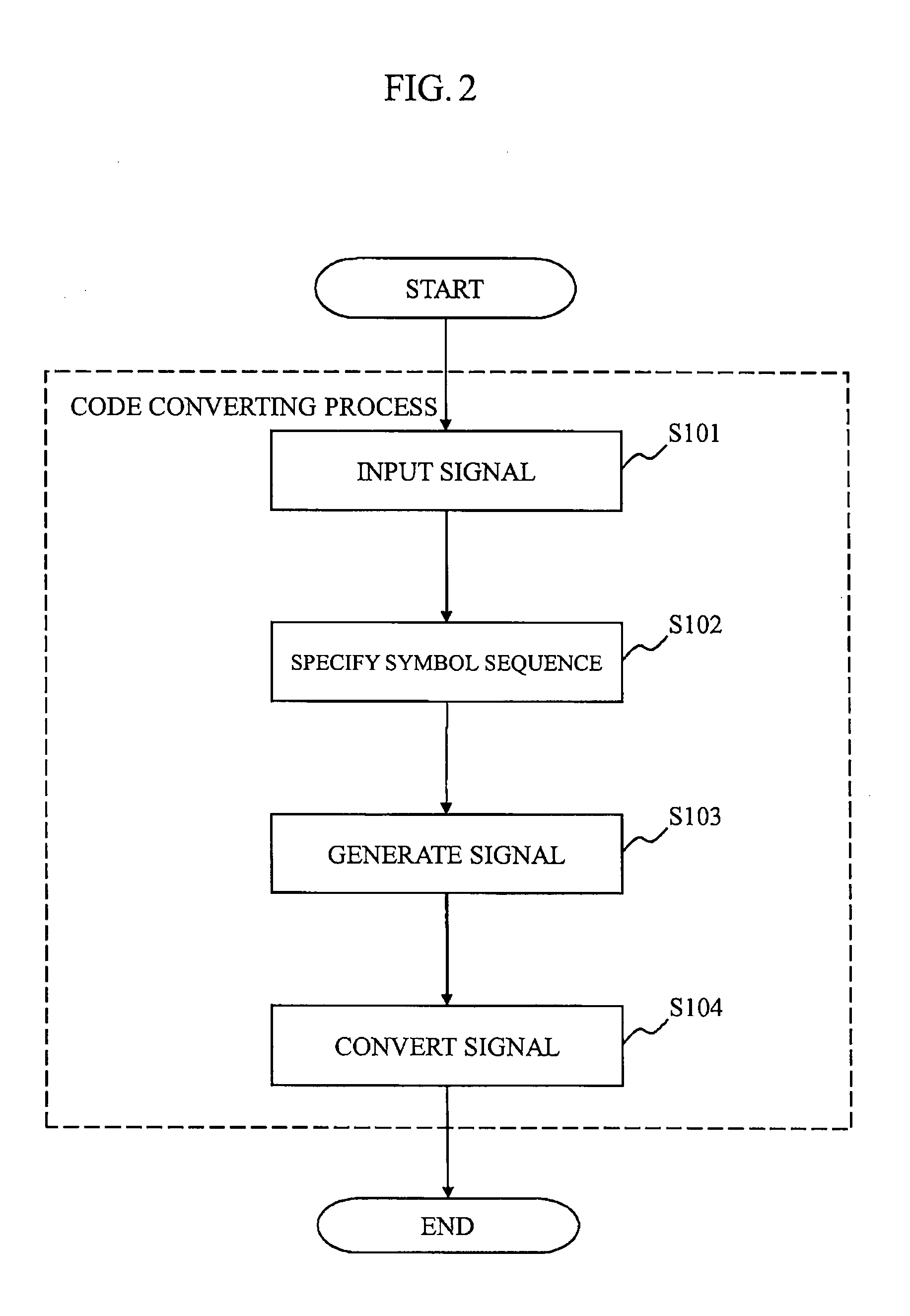Code converting apparatus, receiver, and code converting method
a code converting and code technology, applied in the direction of electrical devices, instruments, measurement devices, etc., can solve the problems of increasing the amount of calculation and increasing the number of samples, and achieve the effect of less calculation
- Summary
- Abstract
- Description
- Claims
- Application Information
AI Technical Summary
Benefits of technology
Problems solved by technology
Method used
Image
Examples
embodiment 1
[0046]FIG. 1 shows a block diagram illustrating a configuration of a code converting apparatus 100 according to a first embodiment. FIG. 2 shows a flowchart illustrating an operation of the code converting apparatus 100 (i.e., a code converting method).
[0047]Referring to FIG. 1, the code converting apparatus 100 includes a signal inputting section 101, a symbol sequence memory section 102, a symbol sequence specifying section 103, a signal generating section 104, and a signal converting section 105. Referring to FIG. 2, the code converting apparatus 100 carries out a code conversion process, Step S101 to Step S104, by using the sections shown in FIG. 1.
[0048]The code conversion process of this embodiment uses a symbol sequence x1 x2 . . . xm expressed by a permutation of m elements in a set A having predetermined n kinds of symbols where m, d, and n are integers satisfying m≧4d, d≧1, and n≧2. A symbol sequence composed of consecutive 4d symbols at an arbitrary position in the symbol...
embodiment 2
[0064]In a second embodiment, the code converting method of the first embodiment is applied to a method for estimating multipath in a received signal (hereinafter, referred to also as an “incoming signal” or an “incoming wave”). It is noted that the code converting method of the first embodiment may also be applied to a method for estimating incoming time or direction for a plurality of signals received by an array antenna or the like in the same manner as the second embodiment.
[0065]An example of application of this embodiment to a positioning apparatus using the GPS (Global Positioning System) is described below. It is noted that this embodiment is also applicable to an apparatus using a different communicating method or a different positioning method.
[0066]FIG. 4 shows a block diagram illustrating a configuration of a receiver 200 (i.e., a positioning apparatus using the GPS) according to this embodiment. FIG. 5 shows a block diagram illustrating an example of a hardware configur...
embodiment 3
[0107]The number of appearances of each sequence pattern included in the sequence patterns pi differs. Therefore, by using each sequence pattern an equal number of times, the noise of the code converted signal can be equalized. Thus, in a third embodiment, the signal generating section 104 is designed to add an equal number of partial signals for each sequence pattern in Step S103 in FIG. 2. Specifically, the signal generating section 104 limits the number of times it adds partial signals for each sequence pattern specified by the symbol sequence specifying section 103, to a constant number. The constant number here may be a preset threshold common to all the sequence patterns. Alternatively, the constant number may be the number of times of addition of the partial signal of the sequence pattern having a least number of times of all the sequence patterns.
[0108]Thus, the code converting apparatus 100 of this embodiment may be characterized in that the number of each sequence pattern ...
PUM
 Login to View More
Login to View More Abstract
Description
Claims
Application Information
 Login to View More
Login to View More - R&D
- Intellectual Property
- Life Sciences
- Materials
- Tech Scout
- Unparalleled Data Quality
- Higher Quality Content
- 60% Fewer Hallucinations
Browse by: Latest US Patents, China's latest patents, Technical Efficacy Thesaurus, Application Domain, Technology Topic, Popular Technical Reports.
© 2025 PatSnap. All rights reserved.Legal|Privacy policy|Modern Slavery Act Transparency Statement|Sitemap|About US| Contact US: help@patsnap.com



